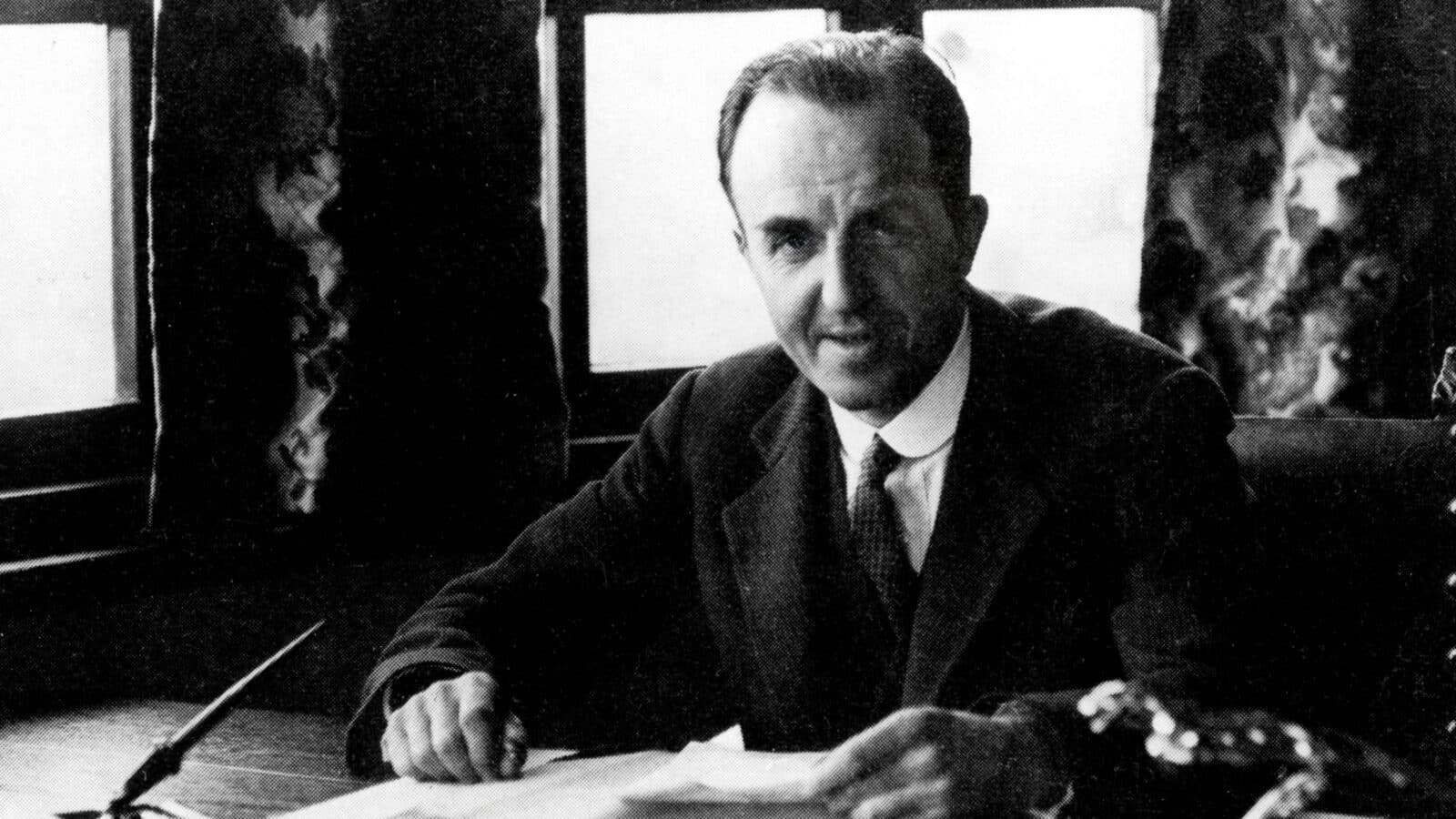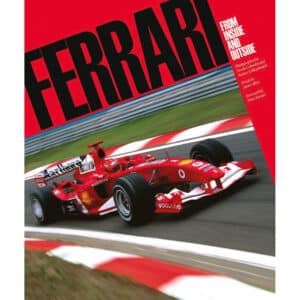

SALUTE THE JUPITER !
SALUTE THE JUPITER! "Motor Sport" Undertakes a Fast Run to the West Country in Jowett's Long-Awaited Flat-Four, Tubular-Chassis, II-Litre Sports Model THE JOWETT JUPITER has been a long time a-coming…

‘Kim’ produced affordable sports cars but for Morris’s accounts department, models weren’t shifting quickly enough
Getty Images
How many people first competed in an MG? Until diluted to a mere badge, these unassuming machines based on common mechanicals were a reliable way into many competitive car pleasures. Here is the man who made it happen – Cecil Kimber, known as ‘Kim’, warts and all.
Jon Pressnell, known for detailed research on lesser-known figures of the motoring sphere, goes to town on Kim, including his infidelity and his conservative views such as loathing jazz and disapproving of increasing women’s rights – he refused to let one daughter take up her scholarship to Oxford – alongside his more positive capabilities. You have to be impressed by his work ethic – running his several Morris garages and developing his own sporty variations on a Morris theme.
Yet MG was never his own company. Although the inspiration and prime motivator of the new sub-brand, Kimber was a Morris employee – until in 1941 he was sacked by Morris Motors. First-hand memories describe the shock and the internal politics that contributed, before outlining the rest of his career until he was killed in a 1945 train crash. Thus he never saw the mass-market success (for sporty two-seaters, at least) of the marque post-war, though he might have noticed how many dashing RAF officers in wartime films were given a TC or TD to roar up to the pub in. It was that sort of market that Kimber saw and exploited – stylish, affordable cars that looked sporting yet were simple to fix and maintain. A Bugatti might be your aspiration, but it needed specialist attention. Your MG Midget just went to the local Morris garage.
But to get to that place Pressnell first gives Kimber’s backstory – a long way back, yea, even unto the 17th century, but at least we soon get to his childhood in Cheshire where he shows artistic flair. He also became keen on sailing, a passion which helped him in troubled times; more important, though, was his “overpowering attraction towards motorcycles and motorcars” which prompted him to cycle miles hoping to see a few cars tackle a hill in those car-sparse 1900s. He had little engineering training, merely some evening classes – plus accountancy, which he said was more useful. Quotes from relatives illuminate this section with personal photos, including his early racing attempts.
Given the detail on Kimber’s life, particularly thanks to one of his daughters who did a lot of research on her father, it’s a good thing that Pressnell firmly condenses the post-war, post-Kim MG story, because what with the life tales, photos, reprints of lectures and a short debate about the actual founding date of MG there are 100 pages to come after his death.
![Cecil Kimber book]](https://motorsportmagazine.b-cdn.net/wp-content/uploads/2023/07/Cecil-Kimber-book-150x150.jpg)
|
Kim: A Biography of MG Founder Cecil Kimber
Jon Pressnell Dalton Watson, £130.50
|
Kimber was aware of future trends such as streamlining and integral construction; after describing the sophisticated single-seat R-type racer Pressnell speculates that with better profits and no interference from Morris Motors, MG might have become a technology innovator.
Weaving in and out of the multiple models, the book switches between Kimber’s family life, the factory and the works racing, with fine imagery. There’s also a good supply of MG’s brochures – Kimber kept a close eye on artwork: “It’s the salesman that goes home with you.”
Competition was the other sales booster Kimber had confidence in, and MG did plenty from entering standard models in JCC events at Brooklands to those one-off record-breakers such as EX135. Maybe it’s no coincidence that the firm’s best profits seem to have coincided with Tazio Nuvolari’s victory aboard a K3 in the 1933 Tourist Trophy and the same model’s magnificent 1933 Mille Miglia class win.

That boost, though, was no defence when in 1935 ownership of MG shifted from William Morris to Morris Motors. Immediately the black hats looked at the accounts and the racing department was snuffed out. “The whole thing is crazy. What fools we have been…” said Leonard Lord, now at the helm with Kimber demoted from MG’s MD to general manager. Luckily he had sailing with the family to restore him, although we also learn of marriage difficulties and the beginnings of that affair over this period.
Who knows what he might have gone on to do post-war. Like WO Bentley, he had had his own creation taken from him, yet still seemed full of creativity. Perhaps he might have started his own outfit tuning Fords or Austins, even finally getting his own name on his cars.
Despite alleys we didn’t need to explore, Kim gives an enjoyable and rounded idea of a man who made the marque: an achiever and a demanding but fair boss, who deserves more acclaim than just within MG circles.
Ferrari: From Inside and Outside
James Allen; images by Ercole Colombo and Rainer Schlegelmilch

Does the world need another book celebrating Ferrari? Well, when it contains images as mesmerising as this the answer is yes. Written by James Allen, the racing journalist many will remember from his days as an F1 commentator in the 2000s, the book is a joint project between Motorsport Images, ACC Art Books and the well-regarded Iconic Images, which usually specialises in portraits of actors and musicians. But the real stars of the show are the photographers Ercole Colombo and Rainer Schlegelmilch whose work is featured in this lushly produced 300-page book. Many of their best pictures will be familiar such as the flaming shot of Stefan Johansson’s 156-85 at Monaco in 1985, but even the lesser-known ones here in saturation colours seem to elevate their work into something approaching art. JD
ACC Art Books, £60 ISBN 9781788842105
Gerry Birrell: Lost Before His Time
Darren Banks

Gerry Birrell is one of those figures appreciated best by those lucky enough to have seen and worked alongside him. In tribute to the Scottish driver once considered a successor to Jackie Stewart, Darren Banks chronicles his life across 150 pages, from his early days as a mechanic in the club scene to his rise up to the single-seater world. Banks paints a vivid portrait of a racer who was as much a gifted mechanic as he was a driver, with a business mind helping him navigate through the intricacies of motor sport in the 60s and 70s. The likes of Niki Lauda, James Hunt and Ronnie Peterson pop up, while insight from Gerry’s widow, mechanics and team-mates provide balance. Banks demonstrates why those in the know rate Birrell so highly and how his fatal F2 accident was avoidable, leaving you to ponder the question – what if? HH
Performance Publishing, £29
ISBN 9781739124915